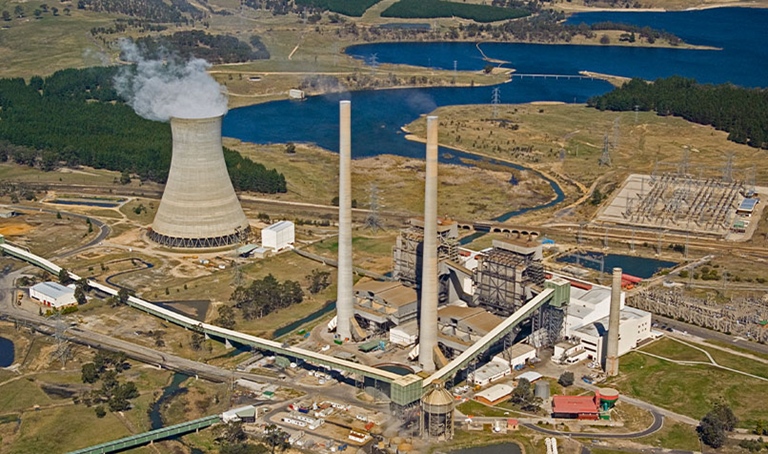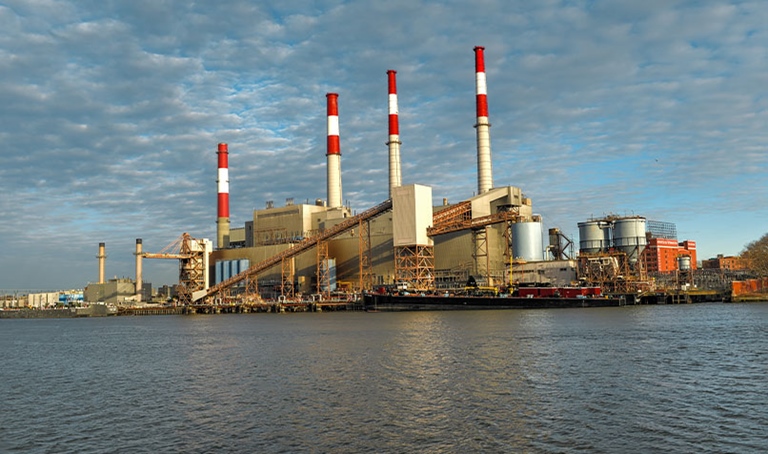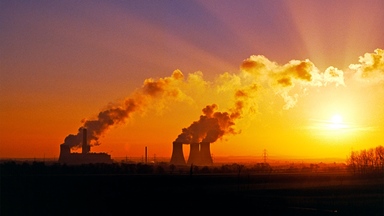Loading component...
At a glance
- Finding inventive ways to repurpose 6500 coal-fired power stations globally is an increasingly pressing issue.
- Outstanding examples of reimagined power stations exist, although use is contingent on the location and existing infrastructure.
- The creation of a masterplan for a site's next life ideally runs in tandem with decommissioning and rehabilitation requirements.
The notion of bringing new life to old assets and infrastructure is inspiring, and few repurposing projects get much bigger or more challenging than reimagining a coal-fired power station.
The global energy switch from fossil fuel to renewable sources has overshadowed the destinies of the legacy assets that historically powered the industrial revolution hundreds of years ago.
The International Energy Agency says achieving net-zero by 2050 requires phasing out all unabated coal-fired power generation by 2040. With over 6500 coal-fired power stations still operating around the world and the phase-out of coal escalating in advanced economies, decisions on the future of these once-essential assets are now pending.
The list of iconic examples for the adaptive use of former coal-fired power stations is growing. One of the most celebrated is London’s Battersea Power Station, which reopened in 2022 almost 40 years after its closure.
Today, thanks to Malaysian investors and a decade-long effort, it is a vibrant shopping and leisure complex, with large areas of the surrounding 17-hectare site still under development. Further up the Thames, the city’s famous Tate Modern art gallery occupies the repurposed Bankside Power Station.
On Singapore’s harbourfront, St James Power Station is now the global HQ for household appliance maker Dyson, while plans linger for the transformation of the city-state’s Pasir Panjang Power Station as part of the Greater Southern Waterfront development.
Australia has stellar examples in the Brisbane Powerhouse, now a cultural centre, and Sydney’s Powerhouse Museum, which recently vacated its Ultimo site ahead of a second revitalisation project.
As the energy transition gains momentum, governments across the world are orchestrating the timing of the switch to renewables to keep the lights on. Concurrently, energy companies and asset owners evaluate huge liabilities and the high costs of rehabilitating sites, alongside the priceless value of their social licences to operate and future stewardship concerns.
Communities invariably are loud about what happens to coal-fired power stations, not least because they have provided ongoing community employment for so long.
“There is nowhere near the required global knowledge on coal-fire [power station] repurposing yet,” says professor Bruce Mountain, director of the Victoria Energy Policy Centre.
The UK leads the way globally, both for the fast closure of coal generation and for the transformation of end-of-life power plants, notes Mountain, who points out that many early examples of coal-fired power station transformations are in CBDs.
Urban areas bring the immediacy of a dense population, and a propensity for tourists and transport infrastructure delivering foot traffic, which all create amenable conditions for museums, public spaces and residential accommodation.
In Australia, where all remaining coal-fired power stations are in the regions, solutions look different.
Mountain summarises the current approach as: “Clear the land, leave the transformer, build a battery hub.”
Installing a big battery for renewable energy storage is the obvious option.
There is logic in the trend now playing out across advanced economies to effectively swap out greenhouse gas-emitting energy sources for decarbonising alternatives.
Find the way forward

Location determines the future of a coal-fired power station site, says Kellie Charlesworth, Australasian energy transition leader at design and engineering giant Arup.
The firm has created masterplans for a range of power stations across the world. Among them are Battersea and French company ENGIE’s Hazelwood in Australia’s Latrobe Valley.
Recent Arup clients include the UK’s last coal-fired power station, Uniper’s Ratcliffe-on-Soar (closed in September 2024), and private investor-owned Greenspot’s Wallerawang Power Station in central New South Wales.
“What we’re exploring with clients is the most appropriate, best and highest, land use for every site,” says Charlesworth. Outcomes are contingent on the existing opportunities each site provides, including infrastructure and skilled workforce, and rely on the vision through the eyes of many different stakeholders.
"You are looking at individual parcels of land and trying to find the delta. What will it cost to get that site to the higher land use, beyond the minimum rehabilitation requirements?"
Governments look at how power stations fit into regional economic transformations and impose extensive rehabilitation requirements to ensure operators clean up their mess.
Energy generators lean into decarbonisation and renewable energy options.
Developers have more disparate perspectives to owners for whom finding other uses for these sites may be a compensation for huge rehabilitation costs, Charlesworth advises. She is intent on seeing a change in the popular rhetoric that positions these sites as “something to get rid of”.
Timing is important, too. Ideally the reimagining or development of a masterplan happens in synchronicity with decommissioning and rehabilitation requirements for sites.
Options to consider
A first step in the redevelopment of a power station is the alignment of vested interests or “getting all your stakeholders on board,” explains Charlesworth. It is also important to consider the combination of assets and connectivity available to uplift the land value.
Coal-fired power station sites have a suite of attributes in common, notably very good power connections or access to them, water and transport of various types. “It’s a brownfield [site] situation so neighbours are usually not too close,” says Charlesworth.
“You are looking at individual parcels of land and trying to find the delta. What will it cost to get that site to the higher land use, beyond the minimum rehabilitation requirements?”
If the decision is to replace the generation capacity of coal with renewables, in many instances wind and solar probably won’t fit. However batteries, gas-fired power (which is recognised as part of the transition), hydrogen production or other complementary land uses involving co-location of businesses like solar panel manufacturers may be viable, she says.
Decarbonisation is the focus for one of Australia’s largest energy companies, AGL, with its integrated Hunter Energy Hub that aims to bring together green advanced manufacturing, waste recycling, grid-scale batteries and energy generation.
It will be set on 10,000 hectares in the New South Wales Hunter Valley, where the now-decommissioned Liddell and still operating Bayswater (slated for closure in 2030-33) power stations stand.
In New York City, Ravenswood Generating Station was acquired by energy giant Rise Light & Power for transformation into a renewable energy centre. One of Europe’s largest utility companies, Enel, is seeking to turn 23 power plants in Italy into eco hubs dedicated to science, art, culture, tourism or new industrial activities.
For those tasked with reimagining a coal-fired power station, the challenge is in finding a combination of activities that will deliver the best return. In regional locations, no single purpose or activity is a clear winner, according to Charlesworth.
“Batteries are the obvious starting point for everybody because they make money in the market, they’re modular — so readily installed — and approvals are fairly easy.”
Community expectations for employment, however, may not be met. The goal to replace or create jobs on a renewables-only site may be far-fetched, suggests Mountain.
“There are jobs in the construction phase of wind and solar, but very few in the operational phase. Running a coal-fired power station is a very labour-intensive business, so the transition to labour-lite is massive.”
Towards net zero: Asia’s green transition
Understand the value proposition

By contrast, developer Greenspot 2845 identified a great opportunity for the Wallerawang Power Station site “because they bring a range of shared expertise and are intent on showing a clear value proposition for a centre of economic growth for the Lithgow region,” Charlesworth observes.
While a battery energy storage system is being installed on a section of the site, overarchingly it has been designed for mixed uses including tourism, residential and retail, and has carved out a substantial employment enterprise zone.
There are also masterplans for Swanbank Power Station, a small site in Ipswich, Queensland, which is one of Australia’s fastest growing residential areas. Run by Queensland Government-owned CleanCo, the former coal-fired plant has been adapted to operate as a gas-power plant early in the transition phase, and there have been community co-design activities around further future use.
"There are jobs in the construction phase of wind and solar, but very few in the operational phase. Running a coal-fired power station is a very labour-intensive business, so the transition to labour-lite is massive."
While a battery will be installed, there’s an amphitheatre, sports complex and a walking trail that connects two residential areas, and locals and visitors can take a ride on the heritage railway that previously delivered coal. It’s close to Brisbane, so universities or start-ups can use sites like Swanbank as innovation hubs for new technologies.
Future uses of coal-fired powered stations are subject to approval but open to the imagination of regional planners, owners, the community and investors. They are also catching the eye of data centre hyperscalers for their proximity to water and energy.
These sites can play a dynamic role in future economic development, but decisions made without a broader plan are risky, Charlesworth cautions. “A misstep early on could easily cut off pathways to the future.”
Financing the switch

The Asia-Pacific region is home to approximately 5000 coal-fired power plants, many of which have not reached the halfway point of their typical lifespan.
In countries such as India and Indonesia, coal use is on the increase as a phase-out presents issues of energy security and fewer jobs.
Plants in the region will add around 215 gigatonnes of carbon emissions to the atmosphere between now and 2050, equating to more than 40 per cent of the global carbon budget to meet the Paris Agreement goal, states a recent MSCI Sustainability Institute report.
A critical inhibitor to the phase-out is the availability of finance, with taxonomies and standard setters not making allowances for coal projects, according to the World Economic Forum. The EU Green Taxonomy, for example, imposes a ban on coal investment.
Another preclusive factor is the widespread use of long-term power purchase agreements.
In a bid to tackle the problem, the Monetary Authority of Singapore has announced two pilot projects in the Philippines for the use of high-integrity transition credits for emissions reduced by the early retirement of a coal-fired power plant.
Global organisations including the World Business Council for Sustainable Development have been convening stakeholders to find ways to promote complementary development — phasing in renewables to enable the phase-out of traditional energy sources.

